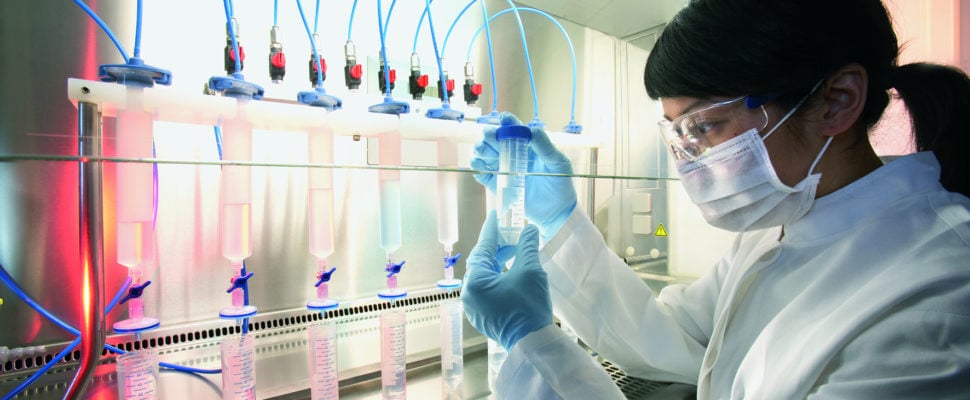“When I left Janssen, I never imagined joining a Korean company,” recalls Choi Tae-Hung, sipping a freshly brewed yujacha tea in his office on a crisp autumn morning as he gazes down at the busy, sundrenched streets of Seoul below. “I thought that the global business of Korean pharmaceutical companies would be very limited due to a lack of competitive R&D or marketing capabilities.” Choi spent two decades at Janssen before moving on, but when he did, it was to become president of Korean pharmaceutical company Boryung in 2013. “After speaking to a number of people within the industry, I realized that everyone was talking about big changes in strategic direction for domestic pharmaceutical companies. The new focus for these businesses was on the global market,” explains Choi.
Korea’s chaebols, the country’s large conglomerates, were in large part responsible for building the country’s reputation in the fields of electronics, shipbuilding and automotive. Today, Korea’s government is looking to develop growth in new sectors outside of this traditional base; pharma has been selected as one of these new sectors. The race is now on to position Korea as the Asian hub for pharma R&D and new drug development (NDD), something that only a few years ago would have been unthinkable: a situation mirrored in other Asian countries such as Taiwan and Singapore.
“In the past, Korea’s pharmaceutical makers focused mostly on generics,” admits Korea’s Minister of Health and Welfare Moon Hyungpyo. “However, today they are in the process of transforming into brand-name manufacturers by investing more in R&D and developing innovative drugs. The Korean government is very active in helping the drug industry to become truly world-class. With all of these factors combined together, Korea’s healthcare industry will soon join the ranks of global healthcare power houses.”
“Korea is in a unique position in terms of new drug development,” explains Lee Kyeong-Ho, chairman and CEO of the Korea Pharmaceutical Manufacturers Association (KPMA). Indeed, Korea has already successfully brought 22 new drugs to the market between 1999 and 2014, two of which have been approved by the US FDA. “Korean companies have had an interesting experience in developing innovation, but not game-changing innovative new drugs which require significant money and manpower that we do not have enough of yet,” Lee continues. “Nevertheless, we do have successful experience in creating incremental innovation, and this has been an excellent experience for Korean companies,” he adds.
“Koreans really want to win and be number one in everything, rather than being perceived as the little brother of China or Japan,” says UCB Korea managing director Tom Roberts. Although a major market in its own right, Korea looks small in comparison to its neighbors Japan and China, the world’s second and third largest pharma markets in 2013,
Leading the charge in boosting Korea’s regional competitiveness for pharma and R&D is the Korea Health Industry Development Institute (KHIDI), Korea’s sole public institution designed to foster growth in the healthcare industries, like pharmaceuticals, healthcare technology, cosmetics, and health systems. “It has already been eight years since global healthcare was selected as one of 17 growth engines of our nation, and we have been somewhat successful in inbound business like attracting foreign patients and physicians for training,” remarks Jung Kee-Taig, president of KHIDI. “In terms of outbound business, we hope to create those success cases more frequently and this business can be a mature and major industry for Korea’s growth by 2020.”
There is a solid support system behind Korea’s Pharma Vision 2020. “The level of quality approval in Korea compared to Europe and the US for products like biologics is usually the same; sometimes it is even better but this is not recognized worldwide,” says Chung Seung, Minister of Food and Drug Safety. Since becoming Minister in 2013, Seung has already taken a number of efforts to ensure the ministry actively participates in forums, working groups and international organizations to promote Korean medical products. In July 2014, Korea officially joined PIC/S, which created a framework where international creditworthiness of domestic medical products’ quality can be elevated. “We also introduced the ‘Regulatory Affairs Certification System’ to nurture experts advanced-level experts who can meet requirements and standards on laws and scientific regulations from product development to post-surveillance including clinical trials, approval/license, and GMP,” continues Seung. “We will actively provide support to develop biological products such as stem cell therapy products by fully implementing a ‘Support Scheme for Global Biological Products’, which aims at becoming one of the world’s top seven powerhouses in the biological product field by 2017. The ministry will rigorously support commercialization of vaccines, biosimilars, stem cell therapy products and gene therapy products. We will also support domestic pharmaceutical companies advancing into the global vaccine market while also expanding our self-sufficiency rate from 32 to 70 percent in the domestic vaccine market over the next six years.”
However, becoming a top-tier nation for pharmaceuticals will take time and effort. Hakim Djballah, CEO of Institute Pasteur Korea, believes that without attracting the international know-how necessary for good solid tech transfer, the goals of Pharma Vision 2020 are more of a dream than reality. “The infrastructure for basic research is already in place and translational research is beginning to take off, but the infrastructure to take that into a product still does not exist,” comments Djaballah. “Compared to other countries with facilities for API production, Korea is still at the starting line. It does not mean they cannot achieve it; Korea is geographically attractive and the country just needs to invest in building the industry scale infrastructure to produce APIs.”


